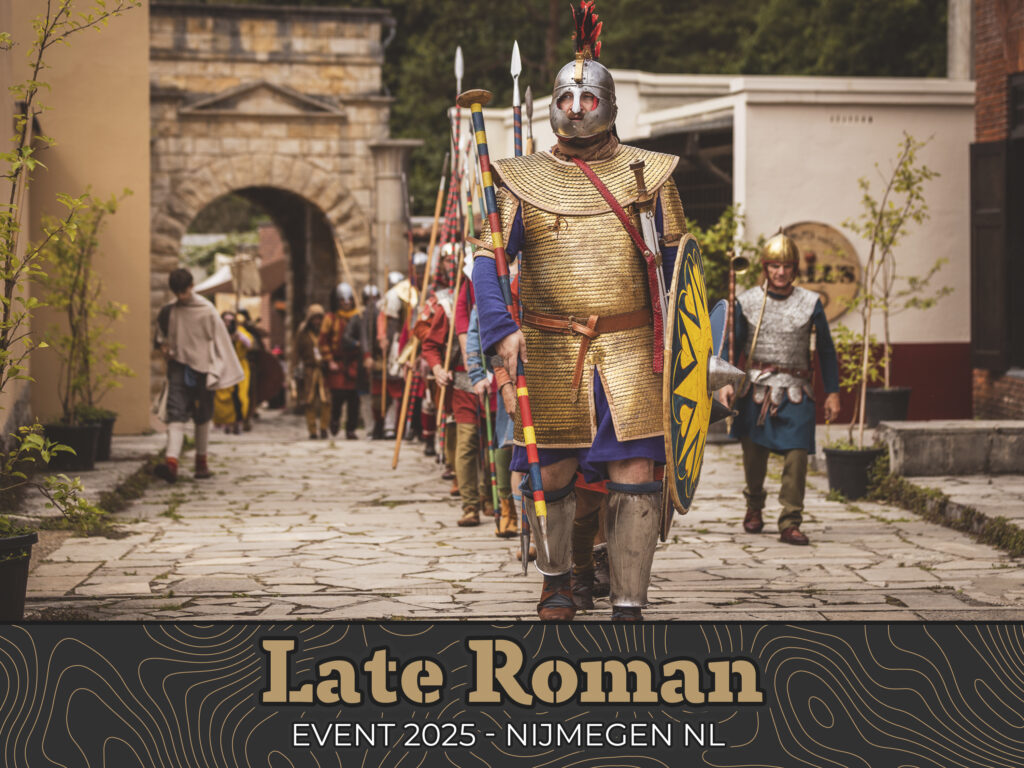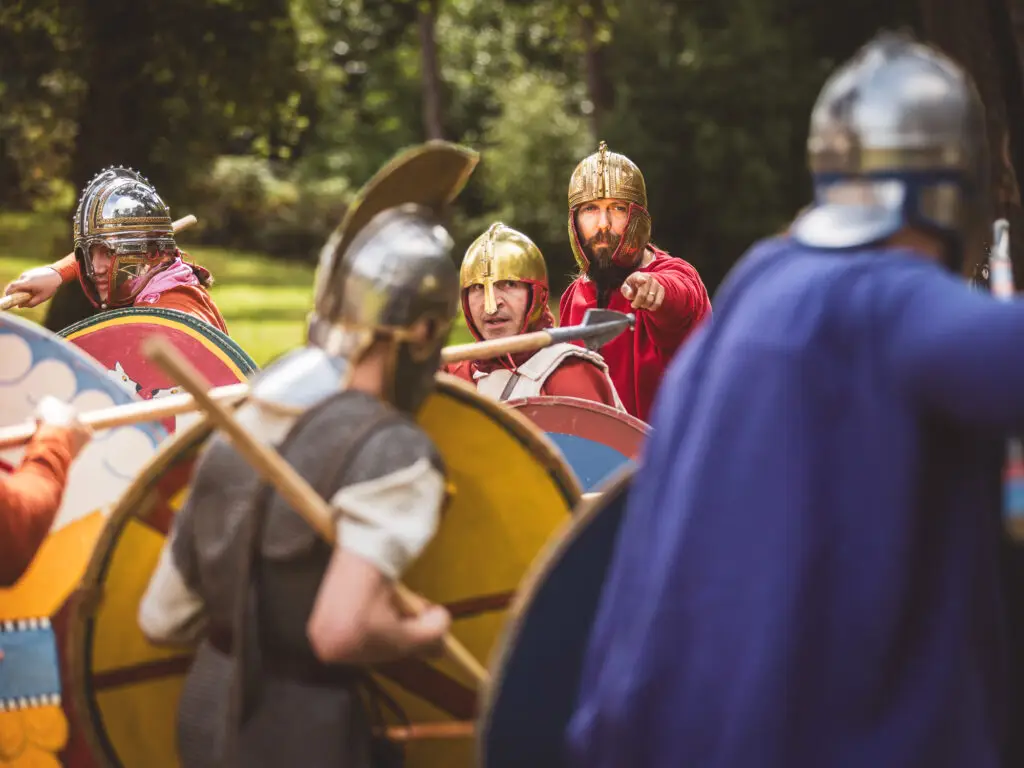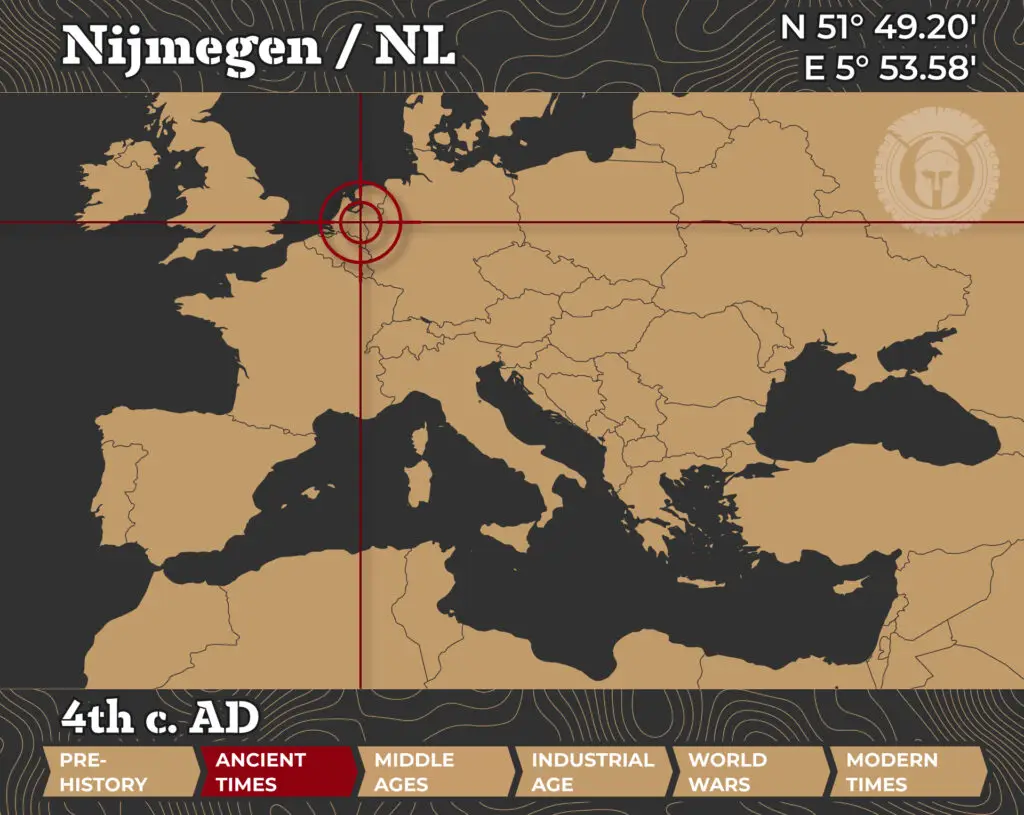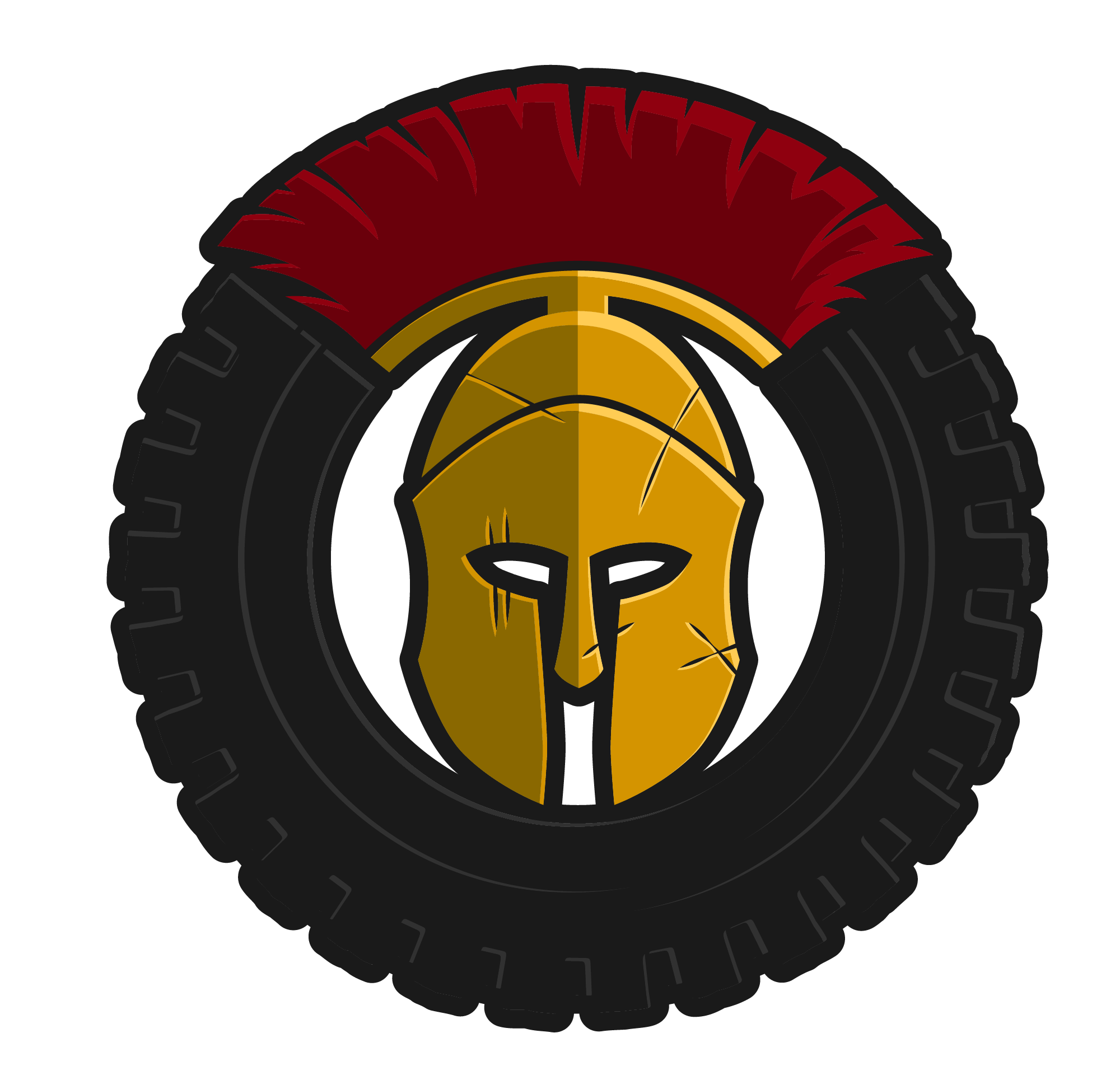
Nijmegen 🇳🇱
Content
We attended this year’s Late Roman Event (LRE XVI), organized for the first time by Comitatensis Truncensimani, and it was a special highlight.
Historical reenactors from all over Europe and beyond came together to bring the Late Roman world to life in the fitting setting of the Museumpark Orientalis in Nijmegen (NL).

Late Romans in Focus
Late Antiquity (3rd–5th century) was a period of profound change. While the 1st and 2nd centuries had been marked by the stability of the Principate, with secure frontiers, a strong economy, and the classical image of the Roman legionary, the 3rd century saw the face of the Empire transformed. New enemies such as the Goths, Franks, and Persians put pressure on the borders, while internal power struggles and economic crises shook the old order.
The army underwent visible changes: the classical legions of the imperial era gave way to a more flexible structure. Smaller units, the so-called comitatenses and limitanei, replaced the large army formations. Equipment also evolved: instead of rectangular shields, round ones became dominant, helmets and armor grew more varied, and soldiers often carried longer swords (spatha). At the same time, new religious movements gained influence, and Christianity spread throughout the Empire.
Late Antiquity was not a “declining” age but a period in which the Roman Empire had to find new answers to a changing world.
Museumspark Orientalis
The Museumpark Orientalis near Nijmegen was founded in 1911 to give believers who could not travel to Palestine an impression of the Holy Land. Instead of a planned basilica, detailed reconstructions of houses and villages were built. Later, Judaism and Islam were added, so that today the park brings the three great monotheistic religions to life.
Program and Activities
Since Wednesday we had been on site and the first days were just for us reenactors. We used this time to settle in and test our equipment. There was intensive combat training with specially designed practice weapons, an exciting game of “Capture the Officer’s Staff” in the Arab village, a service in the Mithraeum, and shared cooking in the evenings.
On the weekend the program opened up for the public. Late Roman equipment, formations and combat tactics were explained and demonstrated in small mock battles. We also marched in formation through the streets of the park. Alongside the military displays visitors could discover crafts such as metalworking and weaving. Our Roman dinner on Saturday became the highlight of the weekend and showed how strongly this shared passion unites us.
Combat Training
Cooking
Arab Village
Final Thoughts
The event was not only a vivid portrayal of Late Antiquity but also a wonderful reunion with friends from all over the world. These were enjoyable and rewarding days that once again showed how fascinating encounters with history can be. We are already looking forward to next year and hope that Comitatensis will once again find the energy and enthusiasm to make the event an unforgettable experience.

How to get there?
- Museumspark Orientalis at Google Maps,
Coordinates: 51°48’53.2″N 5°53’23.1″E
Website: Museum Website
You are currently viewing a placeholder content from Google Maps. To access the actual content, click the button below. Please note that doing so will share data with third-party providers.
More Information